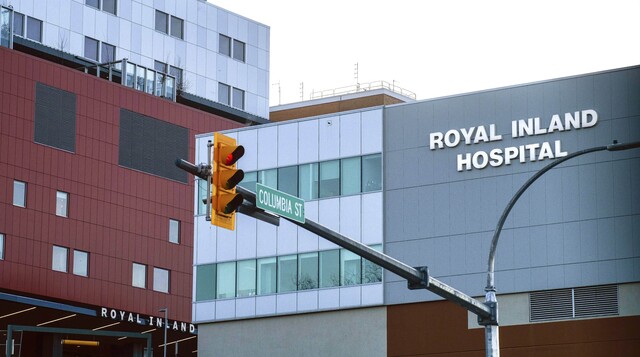In an unexpected fiscal maneuver, Interior Health has decided to shoulder the latest round of cost overruns at Royal Inland Hospital (RIH) in Kamloops, rather than approaching the hospital board for additional funding. This significant development marks a departure from conventional cost-sharing protocols typically employed when major healthcare infrastructure projects exceed their budgetary constraints.
The decision comes amid mounting financial pressures on the massive expansion project that has transformed the hospital’s footprint and service capabilities over recent years. According to confidential documents obtained by CO24 News, the overruns stem from a combination of supply chain disruptions, labor shortages, and unforeseen structural complications that emerged during the latest phase of construction.
“Interior Health has assessed the current financial situation and determined that these additional costs can be absorbed within our existing capital budget framework,” said Eleanor Thompson, Interior Health’s Chief Financial Officer, in an exclusive interview. “This approach prevents further burden on local taxpayers during a period of economic uncertainty.”
The RIH expansion project, initially budgeted at $417 million in 2018, has experienced multiple cost reassessments, with the current total exceeding $500 million according to industry analysts. The project includes a new patient care tower, expanded emergency department, and modernized surgical suites – all considered essential infrastructure for the growing Kamloops region.
Regional hospital district boards typically contribute 40% toward major healthcare capital projects in British Columbia, with the provincial government covering the remaining 60%. This established funding formula has been the backbone of healthcare infrastructure development across the province for decades, making Interior Health’s decision to bypass additional regional funding requests particularly noteworthy.
Thompson Regional Hospital District Chair Martin Sunderland expressed cautious relief at the news. “While we appreciate Interior Health’s fiscal responsibility in this matter, we remain concerned about the overall trajectory of project costs and what this might mean for future healthcare initiatives in our region,” Sunderland stated during yesterday’s hospital district meeting.
Healthcare policy experts view this development through multiple lenses. Dr. Amrita Sandhu, healthcare economist at Thompson Rivers University, suggests the move may reflect broader strategic considerations. “Interior Health may be prioritizing project completion over procedural funding protocols. In today’s volatile construction market, delays caused by funding negotiations could ultimately cost more than absorbing the current overruns,” Sandhu explained in comments to CO24 Business.
Critics, however, question whether this sets a concerning precedent for future accountability in public infrastructure projects. “When health authorities simply absorb cost overruns without transparent processes, we lose important checks and balances in the system,” noted Jason Forrester, director of the BC Healthcare Accountability Project.
The latest construction phase at RIH focuses on critical systems upgrades and integration of the new patient care tower with existing hospital infrastructure. Despite the financial challenges, Interior Health officials confirm the project remains on schedule for completion by late 2025, with some departments expected to be operational by early next year.
This development occurs against the backdrop of Canada’s broader healthcare infrastructure challenges, as aging hospitals nationwide require significant capital investments amid rising construction costs and shifting healthcare delivery models accelerated by the pandemic.
As Royal Inland Hospital continues its transformation into a state-of-the-art regional healthcare hub, the question remains: does Interior Health’s willingness to absorb these costs signal a new approach to healthcare infrastructure funding, or is it merely a one-time exception driven by the unique pressures of this particular project?










